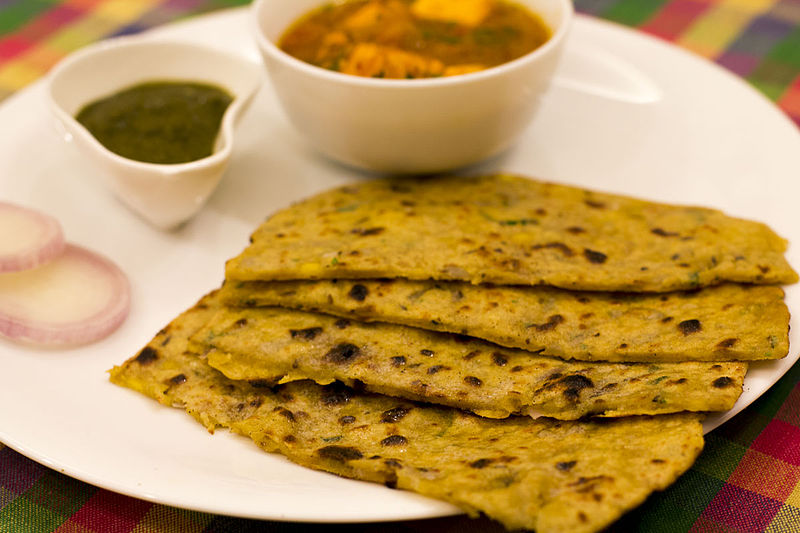Key Difference – Roti vs Chapati
Roti and chapati are both types of unleavened bread commonly consumed in South Asian countries. They are often eaten with a variety of curries, chutneys, and pickles. Although some people use roti and chapati synonymously, there can be differences between the two based on ingredients and cooking techniques. Roti is an unleavened bread that can be made from various types of flour, while chapati is similar to roti but always made with Atta flour. This is the main difference between roti and chapati.
What is Roti?
Roti is an unleavened flatbread originating from the Indian subcontinent and popular in Asian countries such as India, Sri Lanka, Nepal, Maldives, Singapore, and Bangladesh. It is a staple food in many of these countries and is also eaten in non-Asian countries like Jamaica, South Africa, Suriname, Fiji, and Mauritius. Roti is typically made with flour, salt, and water. Although wheat flour is commonly used to make roti, it can also be made with other types of flour, such as corn flour (makki di roti) and finger millet/korcan flour (kurakkan roti). The defining characteristic of roti is that it’s unleavened. The term roti can refer to various flat unleavened breads in South Asian cuisine, including parathas, chapattis, tandoori roti, pol roti, makki di roti, parotta, godamba roti, and rumali roti. The ingredients and preparation methods for these rotis can vary slightly.
What is Chapati?
Chapati is an unleavened flatbread consumed in the Indian subcontinent, where it is also known as roti. It is a common staple eaten with a variety of assortments. Chapatti dough is made with Atta, water, and salt, then kneaded with knuckles and left to sit for a few minutes. The dough is divided into portions and formed into round balls, which are then flattened with a rolling pin before being cooked in a frying pan, griddle, or tawa. Ingredients such as grated paneer, mashed vegetables, spices, and dhal are sometimes added to the dough. Although chapati is known as roti in Indian cuisine, chapatti and roti may refer to different types of flatbread in other countries. For example, in Sri Lankan cuisine, roti refers to a flatbread made of wheat flour and coconut.
What is the difference between Roti and Chapati?
- Chapati is a type of unleavened flatbread made from a specific type of wheat flour called Atta.
- The term roti can refer to a variety of flatbreads in Asian cuisine.
- Roti is sometimes known as chapatti.
- However, there can be a difference between roti and chapatti based on the type of flour used, other ingredients, texture, and cooking texture.
- Chapati is always made from Atta flour.
- Roti can be made from other types of flour.
